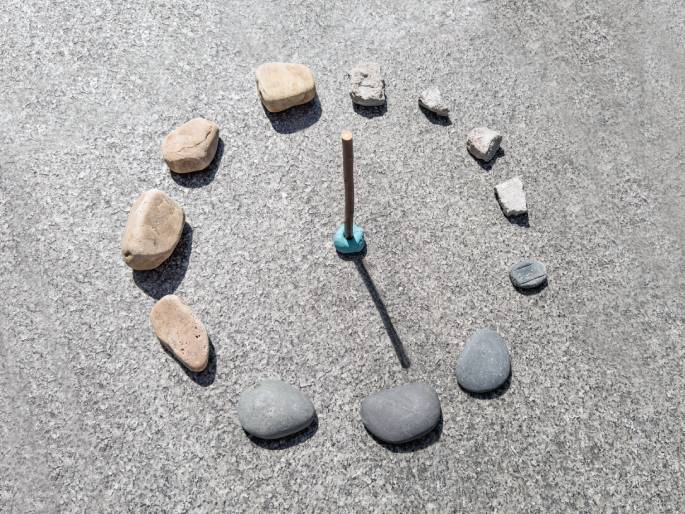Sundial
Stem Activities

Ages: 6-8

Less than 30 minutes

Grownup needed

Do you know how people in ancient times measured time? Let's make an ancient time-telling tool using materials easily found in nature! This is a simple sundial where a stick acts as the gnomon (time-telling pointer), and stones mark different time positions. By observing the changing shadow of the stick, we can understand different times of day and experience how time was "recorded" through the sun's movement.
Materials Needed
- Stick
- Modelling clay
- 12 stones

Step-by-step tutorial
Arrange the 12 stones in a circle.

Take the stick and modelling clay, and insert the stick into the clay.

Place the assembled stick in the centre of the circle, ensuring it stands upright. Wait for a while and carefully observe how the stick's shadow changes as time passes.

The Science Behind It:
The sundial is one of humanity's earliest time-measuring tools, using the sun's shadow to indicate time. When sunlight shines on the sundial's gnomon (the stick in our case), it casts a shadow. As the sun's position changes in the sky, the shadow continuously moves. The sundial's principle is based on Earth's rotation - as Earth spins, the sun's position changes throughout the day, altering the direction and length of the gnomon's shadow.

 STEM Activities
STEM Activities Artistic Adventures
Artistic Adventures Playful Learning
Playful Learning The Recipe Repository
The Recipe Repository  Nature Explorations
Nature Explorations












